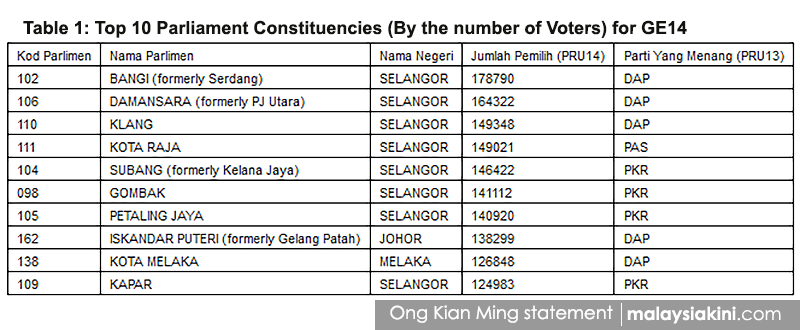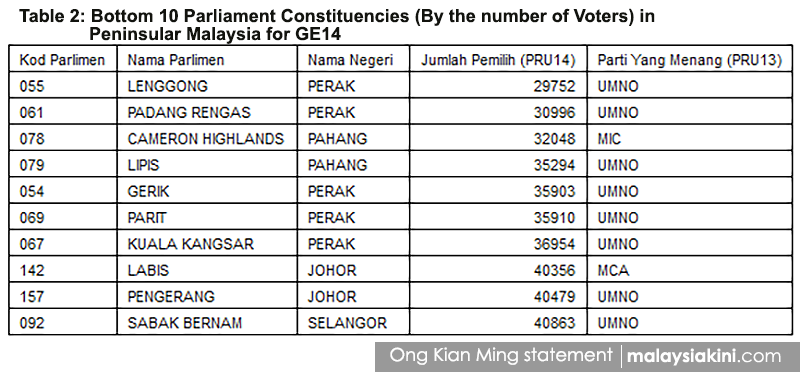COMMENT | The latest figures from the electoral roll show just how badly the Election Commission (EC) has failed in the delimitation exercise that was bulldozed through Parliament last month.
According to the figures from the electoral roll which will be used in the upcoming 14th general elections (which was gazetted by the EC on April 16, 2018), the largest parliamentary constituency in Malaysia in terms of the number of voters is P102 Bangi (formerly Serdang) with 178,790 voters.
The number of voters in P102 Bangi is more than four times the number of voters in P92 Sabak Bernam (40,863 voters), which is also in Selangor and is the 10th smallest parliamentary constituency in Peninsular Malaysia.
P102 Bangi, which I have been nominated as the Pakatan Harapan candidate for, has overtaken P109 Kapar as the largest parliamentary seat in Malaysia (P109 Kapar was the largest parliamentary seat in the 2013 general election, or GE13).
The top 10 largest parliamentary seats in Malaysia (all of which are in Peninsular Malaysia) were all won by opposition parties in GE13. Five were won by the DAP, four by PKR and one by PAS (See Table 1 below).
 Some of the seats in the Top 10 list above are Malay-majority seats (Kapar and Gombak) while others are ethnically “mixed” or heterogeneous seats (Kota Raja and Bangi).
Some of the seats in the Top 10 list above are Malay-majority seats (Kapar and Gombak) while others are ethnically “mixed” or heterogeneous seats (Kota Raja and Bangi).
In contrast, the bottom 10 parliamentary seats in Peninsular Malaysia (in terms of the number of voters) were all won by the BN in GE13 – eight by Umno, one by MIC and one by MCA (See Table 2 below).
I did not include the parliamentary seats from Sabah and Sarawak because of the much larger land area in both states. I also did not include the Federal Territory seats of Labuan and Putrajaya because these territories must have at least one parliamentary seat regardless of the number of voters.

It is clear from these figures that the EC has failed in its constitutional responsibility of adhering to the “one person, one vote” principle with a fair and reasonable urban-rural weightage.
While all of the top 10 parliamentary seats highlighted in Table 1 are in urban areas, there are many other more rural parliamentary seats with a large number of voters.
For example, P19 Tumpat (110,924 voters), P40 Kemamam (107,593 voters), P16 Baling (107,213 voters) and P37 Marang (104,898 voters) are all Malay-majority and largely rural parliamentary seats with more than 100,000 voters.
This clearly shows that voters from all races and from both urban and rural areas have seen the value of their vote diluted under the delimitation exercise that was bulldozed through in Parliament last month.
We can only have a fair and transparency delimitation exercise if we have an independent EC, and this can only happen if Harapan wins power in the upcoming 14th general election.
A delimitation exercise, done by an independent EC, according to an unbiased interpretation of the procedures and principles outlined in the Federal Constitution, will narrow the large discrepancies in the number of voters between the seats and will result in a fairer electoral system in Malaysia.
*Note: All figures were sourced from the electoral roll gazetted by the EC on April 16, 2018.
ONG KIAN MING is Pakatan Harapan's candidate for Bangi and head of the Penang Institute in Kuala Lumpur.
The views expressed here are those of the author/contributor and do not necessarily represent the views of Malaysiakini.

